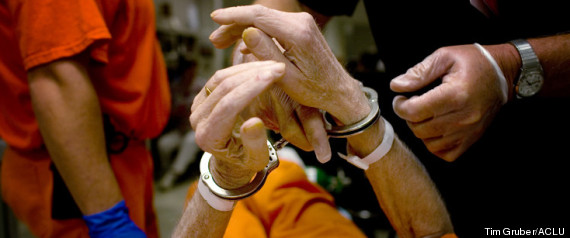The population of aging and elderly prisoners in U.S. prisons exploded over the past three decades, with nearly 125,000 inmates aged 55 or older now behind bars, according to a report published Wednesday by the American Civil Liberties Union. This represents an increase of over 1,300 percent since the early 1980s.
More than $16 billion is spent annually by states and the federal government to incarcerate elderly prisoners, despite ample evidence that most prisoners over age 50 pose little or no threat to public safety, the report said. Due largely to higher health care costs, prisoners aged 50 and older cost around $68,000 a year to incarcerate, compared to $34,000 per year for the average prisoner.
Unless dramatic changes are made to sentencing and parole policies, the number of older prisoners could soar as high as 400,000 by 2030, posing a tremendous threat to state and federal budgets, said Inimai Chettiar, a co-author of the report.
"If we continue spending on prisons the way that we are, particularly on this aging population that's low risk, we're going to get to a place where states can't afford to spend on anything else," Chettiar said.
And while elderly inmates released from prison will require medical care and other public services, a fiscal analysis by the ACLU found that states would save an average of more than $66,000 per year for each elderly prisoner they release.
Original Article
Source: huffington post
Author: John Rudolf
More than $16 billion is spent annually by states and the federal government to incarcerate elderly prisoners, despite ample evidence that most prisoners over age 50 pose little or no threat to public safety, the report said. Due largely to higher health care costs, prisoners aged 50 and older cost around $68,000 a year to incarcerate, compared to $34,000 per year for the average prisoner.
Unless dramatic changes are made to sentencing and parole policies, the number of older prisoners could soar as high as 400,000 by 2030, posing a tremendous threat to state and federal budgets, said Inimai Chettiar, a co-author of the report.
"If we continue spending on prisons the way that we are, particularly on this aging population that's low risk, we're going to get to a place where states can't afford to spend on anything else," Chettiar said.
And while elderly inmates released from prison will require medical care and other public services, a fiscal analysis by the ACLU found that states would save an average of more than $66,000 per year for each elderly prisoner they release.
Original Article
Source: huffington post
Author: John Rudolf

No comments:
Post a Comment